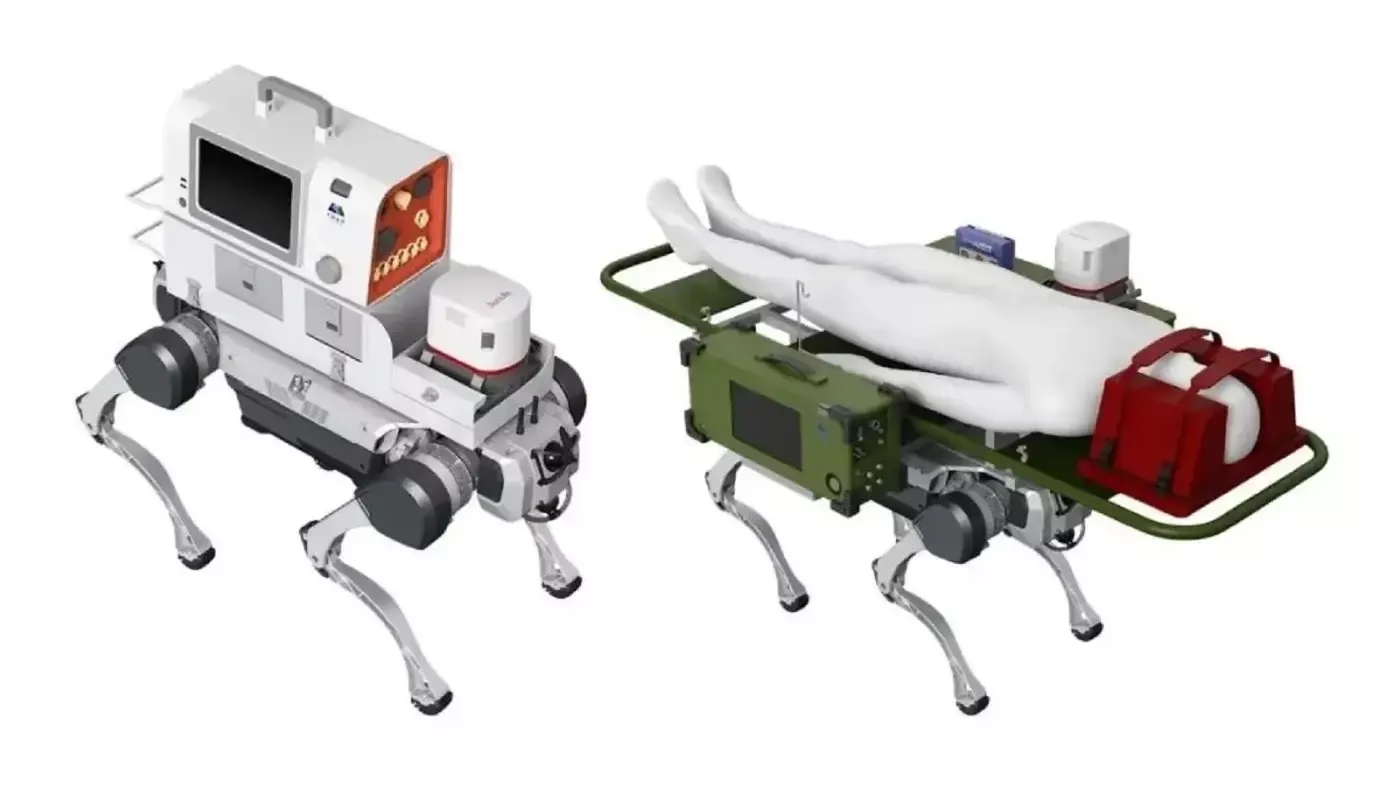
The Chinese company Poseidon has created a revolutionary invention in the field of medical rescue — the first robot-rescuer capable of moving in extreme conditions and independently assisting the injured. It is equipped with high-tech various movement systems that allow it to easily overcome stairs, steep slopes, uneven surfaces, and other complex obstacles.
Specifically designed for difficult conditions
The robot is resistant to high temperatures and can operate in climatic conditions ranging from -20°C to +55°C. This makes it an important assistant in natural disasters, military conflicts, and industrial accidents. It can even move easily in confined spaces, enabling it to extract people from affected areas.
Main medical functions of the robot
The Poseidon rescue robot not only has mobility capabilities but is also equipped with a portable medical assistance system. It includes the following modern medical equipment:
- Monitoring vital signs – analyzes the heart rate, blood pressure, and respiratory activity of the injured person.
- Artificial respiration device – ensures the patient can breathe.
- Infusion therapy module – allows for the rapid administration of medications through the veins.
- Ultrasound examination system – helps analyze injuries and assess the condition of internal organs.
- Defibrillator – used to restart the heart when it stops.
- Cardiopulmonary resuscitation – a crucial function for preserving human life in emergencies.
- Oxygen delivery system – provides additional oxygen to the injured person.
In which fields will it be used?
The Poseidon rescue robot can be effectively utilized in several areas:
? In natural disasters – for searching and evacuating the injured in situations like earthquakes, floods, and fires.
? In military operations – for extracting the wounded from the battlefield and providing them with urgent medical assistance.
? In industrial and urban accidents – performs rescue operations quickly and efficiently after production incidents or traffic accidents.
? Medical assistance to and within hospitals – can be used as an ambulance or to automate resuscitation processes in large hospitals.
A new era in rescue
Experts believe that the Poseidon rescue robot expands the capabilities of artificial intelligence in providing medical assistance and reduces errors related to human factors. While traditional rescue operations require many personnel and valuable time, this robot stands out by moving quickly and accurately in an autonomous manner.
Representatives of the Poseidon corporation emphasize that this technology significantly enhances the capabilities of Chinese and international rescue services, taking the medical assistance system to a new level.
In your opinion, how can such robots change medical assistance in the future?